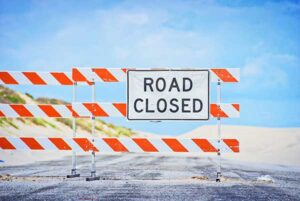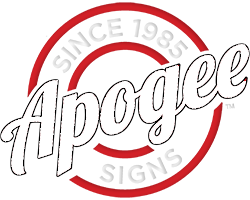
Signs are an essential aspect of modern life, providing crucial information to people on the go, whether they are driving, walking, or navigating public spaces. However, not all signs are created equal, and some may be difficult to read, not visible, or ineffective in their communication. This is where sign surveys come in. Sign surveys are a critical tool for evaluating the quality and effectiveness of signage systems in various locations, including roadways, cities, and buildings.
Sign surveys provide valuable data that can help organizations identify deficiencies and develop recommendations for improvement, leading to enhanced safety, compliance, efficiency, and user experience. By evaluating the quality, visibility, legibility, and effectiveness of signage systems, sign surveys help ensure that the signage systems meet relevant regulations and standards and are effective in communicating with their intended audiences. Sign surveys also play a critical role in identifying potential hazards due to missing or confusing signage, leading to improved safety for drivers, pedestrians, and visitors. In this article, we will explore the basics of sign surveys, including their purpose, types, benefits, and how they can help organizations improve the quality and effectiveness of their signage systems.
There are three main types of sign surveys:
- Roadway sign surveys: These surveys evaluate the quality and placement of road signs, including directional signs, warning signs, and regulatory signs, to ensure they are visible, legible, and conform to traffic regulations.
- City sign surveys: These surveys focus on the signage in public spaces such as parks, museums, and commercial areas. They aim to improve wayfinding and enhance the visitor experience by ensuring that signs are clear, concise, and visually appealing.
- Building sign surveys: These surveys evaluate the signage within buildings, including wayfinding signs, ADA signs, and emergency signs, to ensure that signage is properly placed, visible, and meets accessibility requirements.
Sign surveys provide numerous benefits for organizations, including:
- Improved safety: Sign surveys help identify potential hazards due to missing or confusing signage, leading to improved safety for drivers, pedestrians, and visitors.
- Enhanced compliance: Sign surveys ensure that signage meets relevant regulations and standards, reducing the risk of fines and legal action.
- Improved efficiency: Sign surveys lead to improved communication, reduced congestion, and better navigation, enhancing the overall efficiency of transportation systems, cities, and buildings.
- Better user experience: Sign surveys ensure that signs are clear, concise, and visually appealing, leading to better user experiences for drivers, pedestrians, and visitors.
To conduct a sign survey, organizations must first determine the type of survey needed based on the location and signage system in question. The survey should evaluate the quality, visibility, legibility, and effectiveness of the signage system, as well as any deficiencies that need to be addressed.

Roadway sign surveys are critical for ensuring that drivers can navigate roads safely and effectively. They evaluate the quality and placement of road signs, including directional signs, warning signs, and regulatory signs, to ensure they meet traffic regulations and are visible and legible. City sign surveys focus on the signage in public spaces such as parks, museums, and commercial areas. They aim to improve wayfinding and enhance the visitor experience by ensuring that signs are clear, concise, and visually appealing. Building sign surveys evaluate the signage within buildings, including wayfinding signs, ADA signs, and emergency signs, to ensure that signage is properly placed, visible, and meets accessibility requirements.
The data collected from a sign survey can be used to develop recommendations for improving the signage system. This may involve adding or removing signs, relocating signs, changing the design of signs, or upgrading the technology used in the signage system. By improving the quality and effectiveness of signage systems, organizations can enhance the safety, compliance, efficiency, and user experience of their transportation systems, cities, and buildings.
In conclusion, sign surveys play a critical role in evaluating the quality and effectiveness of signage systems. They provide valuable data that can help organizations identify deficiencies and develop recommendations for improvement, leading to enhanced safety, compliance, efficiency, and user experience. Whether performed on roadways, in cities, or within buildings, sign surveys are an essential tool for ensuring that signage systems remain effective and relevant in a rapidly changing technological landscape.
